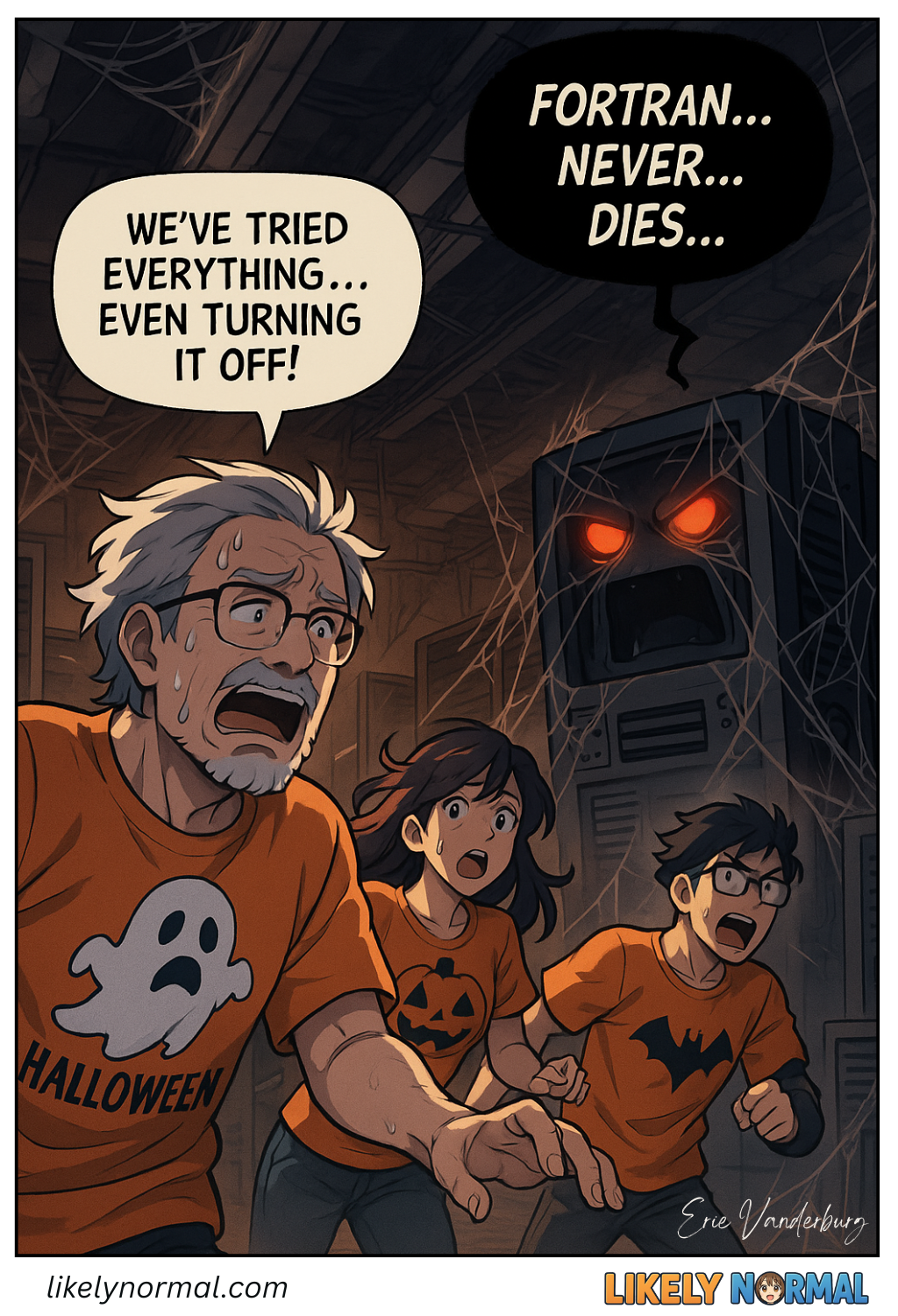Fortran Never Dies
Deep in the bowels of government research labs and financial institution basements, two technological elder gods slumber restlessly – FORTRAN and COBOL, the programming equivalents of mummies that refuse to stay in their tombs. These linguistic relics from the dawn of computing continue to haunt our infrastructure like ghostly mainframes, their spaghetti code tendrils wrapped so tightly around critical systems that we’ve simply accepted our eternal bondage to their will.
FORTRAN, that crotchety numerical wizard born in 1957, still mutters its arcane formulas through the halls of academia and supercomputing centers. Scientists keep feeding it sacrificial punch cards of differential equations because frankly, no one wants to be the grad student responsible for porting thirty years of quantum physics simulations to Python. “It’s faster for number crunching!” they whisper, while secretly fearing that rewriting it might accidentally unravel the space-time continuum.
Meanwhile, COBOL lurks in the financial sector’s shadows like a vampire accountant, its undead hands still processing 70% of global transactions. Every time a bank tries to modernize, some ancient server in a basement somewhere coughs up another batch of working COBOL code, and executives immediately abandon the migration project rather than risk awakening whatever elder horrors keep the legacy system running. The average age of a COBOL programmer now roughly matches the lifespan of a Galapagos tortoise, yet the language persists through sheer bureaucratic inertia.
What makes these digital zombies so indestructible? First, they’re buried so deep in mission-critical systems that extraction would require an archaeological dig. Second, they work with the terrifying reliability of a cursed artifact – why tempt fate by replacing something that hasn’t crashed since the Johnson administration? And third, they’ve achieved that sweet spot where being “too important to fail” meets “too expensive to replace” meets “nobody left alive who truly understands it.”
As we march toward quantum computing and AI overlords, rest assured that somewhere, a FORTRAN subroutine will still be calculating missile trajectories while a COBOL program simultaneously deducts $0.03 from someone’s checking account. These aren’t programming languages anymore – they’re fundamental forces of the universe, as permanent and inexplicable as dark matter. The future may belong to Rust and Go, but the past? The past belongs to FORTRAN and COBOL, and they’re not giving it back without a fight.

Discussion ¬